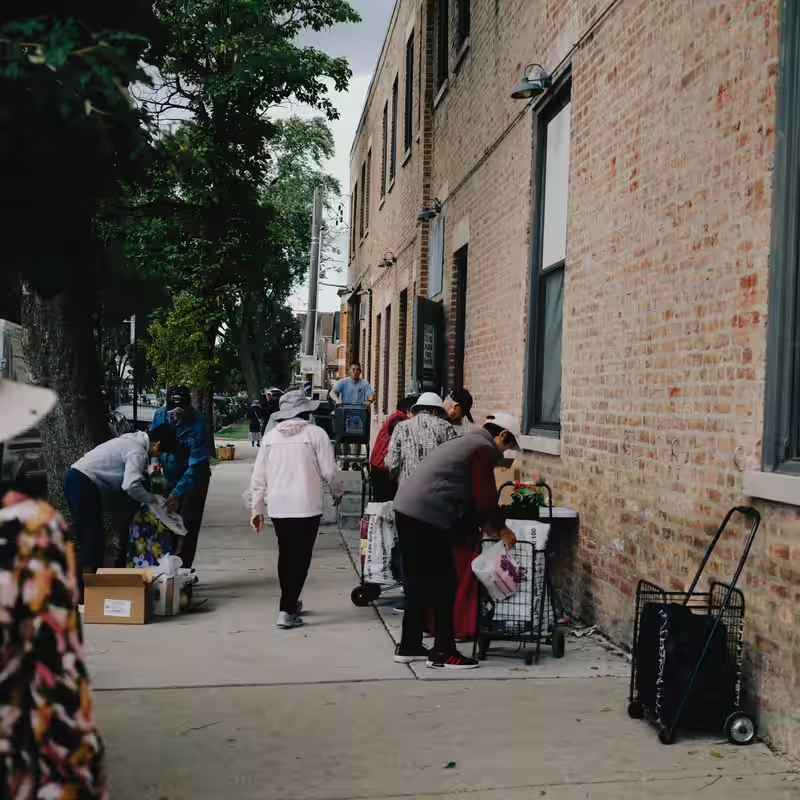Table of Contents
- Economic Divide Deepens
- Luxury Boom vs. Pantry Lines
- Data Behind the Split
- Why the Gap Is Widening
- What This Means for Policy
- Sources
Economic Divide Deepens Across U.S.
The American economy may look strong on paper—but that strength is increasingly reserved for the wealthy. While luxury retailers report record sales and high-end restaurants stay packed, millions of lower-income households are cutting back, skipping meals, or lining up at food pantries just to get by.
This growing chasm defines the new economic reality of 2025: a tale of two Americas, split not just by income but by daily experience.
Luxury Boom vs. Pantry Lines
In Chicago’s Pilsen neighborhood, Ulysses Moreno waited two hours before the local food pantry opened—grocery cart in hand, hoping to feed his three teenagers after losing his construction job. “Our food budget doesn’t stretch as far as it used to,” he said.
Just a few miles away on the Magnificent Mile, designer boutiques hum with activity. Hotel occupancy is near capacity. Patrons sip $20 cocktails while waiting for tables at Michelin-starred spots.
“For people like me—who are homeowners, who are employed—the economy is great,” said Dr. Evelyn Figueroa, who runs the Pilsen pantry. “How is the economy? It depends who you’re looking at.”
Economic Data Confirms the Split
Recent federal and private-sector data underscore this divide:
- Top 20% income earners increased discretionary spending by 6.2% year-over-year.
- Bottom 40% earners reduced non-essential purchases by 9.1%.
- Stock market gains—up 18% in 2025—primarily benefit households holding financial assets, which excludes nearly 60% of Americans.
- Job growth has slowed, especially in service and construction sectors that employ lower-wage workers.
While headline inflation has cooled slightly to 3.4%, essentials like groceries, rent, and auto insurance remain significantly higher than pre-pandemic levels—hitting low-income budgets hardest.
Why the Gap Is Widening
Several forces are driving this economic bifurcation:
- Asset inflation: Wealthy households own stocks, real estate, and private equity—assets that have surged in value.
- Labor market fatigue: Entry-level and hourly jobs are seeing reduced hours and fewer openings.
- Sticky core inflation: Prices for services (childcare, healthcare, insurance) haven’t fallen meaningfully.
- Waning pandemic support: Expanded unemployment benefits and stimulus checks are long gone.
“The recovery has been extremely uneven,” said economist Lena Torres of the Brookings Institution. “We’re seeing a K-shaped recovery where one arm goes up—and the other keeps falling.”
What This Means for Policy and Politics
With the 2026 midterm elections approaching, this economic split could reshape voter priorities. Suburban swing districts may feel optimistic, while urban and rural communities grapple with real hardship.
Some lawmakers are pushing for targeted relief—expanding the child tax credit, capping insulin prices, or increasing SNAP benefits. But partisan gridlock has stalled most proposals.
Meanwhile, businesses are adapting: luxury brands thrive, while discount retailers like Dollar General report declining foot traffic as even budget shoppers tighten belts.
For families like Moreno’s, the hope is simple: “Just enough to get through the week without choosing between rent and groceries.”
Sources
The New York Times: “Wealthy Americans Are Spending. People With Less Are Struggling.”




